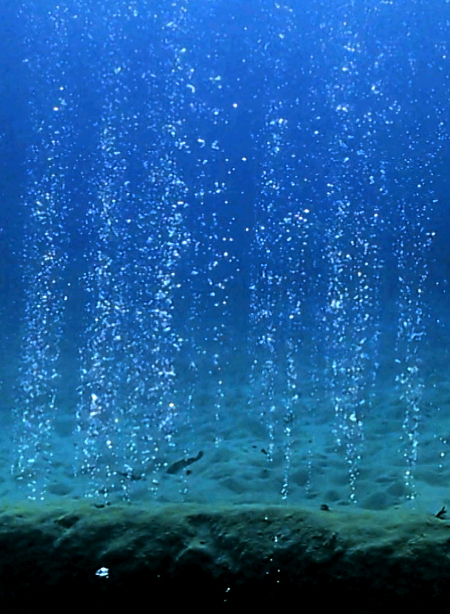Experts react to gas leak claim
 Anti-CSG arguments were stoked by recent footage of a river on fire, but experts say the video is not all as it seems.
Anti-CSG arguments were stoked by recent footage of a river on fire, but experts say the video is not all as it seems.
Worldwide attention was drawn to Queensland’s Condamine River after NSW Greens MP Jeremy Buckingham posted a video of himself setting the river’s seeping methane on fire.
Mr Buckingham claimed the alarming flammability of the river was due to nearby coal seam gas (CSG) extraction works, but this may not be the case.
Methane gas is buoyant, so it typically rises vertically through the earth when it is released at depth. This means that if a coal or CSG well is vertical, methane gas leaks almost only occur within a few hundred metres of the well.
The closest CSG production or exploration works are over 1.4 km from the Condamine River gas seep, suggesting to many that CSG is not responsible.
All around the world, methane gas seeps appear above oil, coal and gas deposits, particularly in areas that have significant geological faults. For this reason, many of the first oil and gas fields were located on or near to natural gas seeps.
Queensland’s Condamine River runs from down through the state to join the Murray-Darling, flowing through the Surat Basin, which covers major deposits of coal, oil and gas.
The river flows over an agricultural groundwater system called the Condamine River Alluvial Aquifer, which sits on top of the Walloon Coal Measures deposit. Both coal and CSG have been have been extracted from the measure.
Methane can travel horizontally, but only when it is forced in that direction by geological structures like dipping geological layers and networks of geological faults.
However, the coal seams under the Condamine River are quite shallow. The Queensland Government has previously reported that the chemistry of the methane seeping from the Condamine River matches a source in the Surat Basin.
There is some debate over, if not from mining activities, where the gas seep comes from. Sharp turns in the river upstream suggest some significant geological faulting in the area, and there is also a chance the gas could come from one of hundreds abandoned coal and groundwater exploration wells that have fallen through the administrative cracks.
UNSW’s Associate Professor Bryce Kelly and PhD candidate Charlotte Iverach, from the uni’s Connected Waters Initiative, say the big problem is a lack of information on gas and groundwater.
“To understand fully the impact of CSG production, we need to know if there are connections between the coal measures targeted for gas extraction and the groundwater used by people and groundwater-dependent ecosystems,” the pair write in a recent piece for The Conversation.
“To date, only 17 out of hundreds of geological faults and no abandoned leaky wells have been incorporated into the regional groundwater model used to assess the impact of CSG production.
“The only way to understand how CSG is affecting groundwater is to account for abandoned wells and other geological structures in groundwater flow models.
“The gas seeps at the Condamine River may indeed be natural. The fact that there is so much confusion and debate about it highlights the need to provide the public with high-quality, scientifically defensible information,” the experts conclude.








 Print
Print